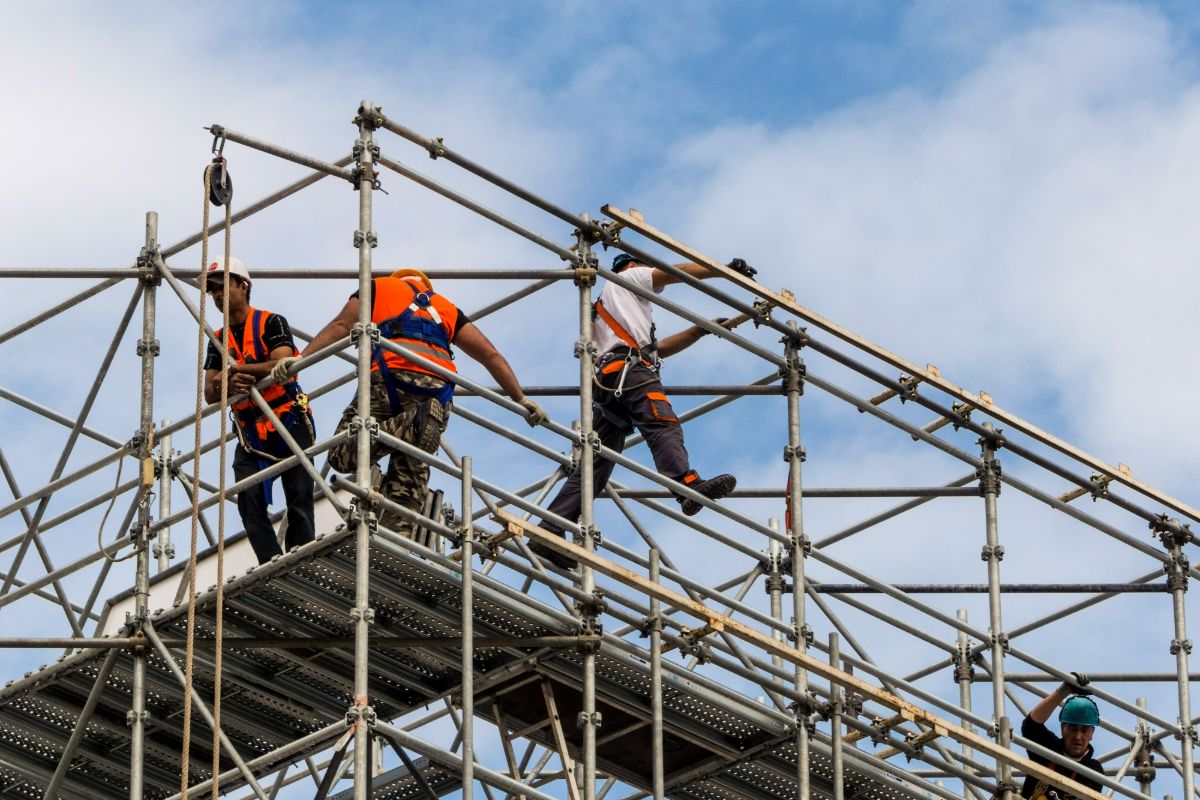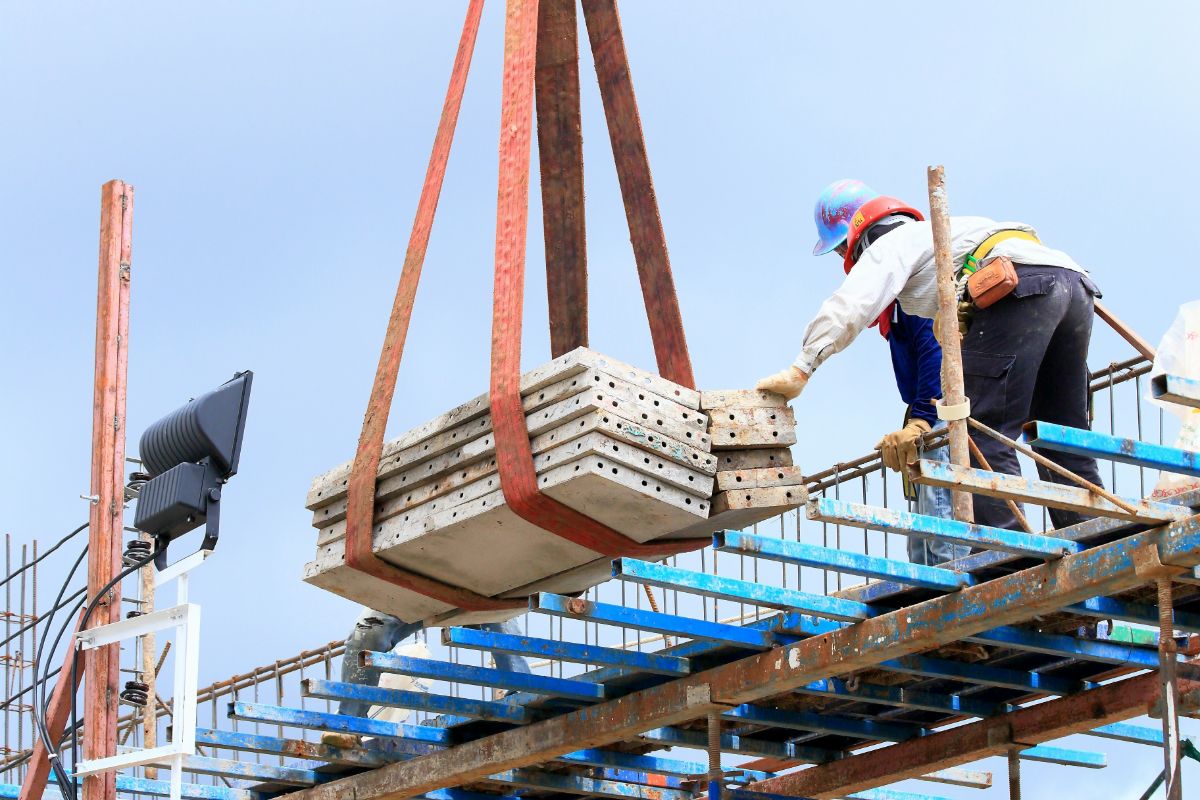
Scaffolding Safety: Best Practices to Prevent Accidents on Site
What are the best practices to prevent accidents on-site with scaffolding safety?
- Conduct thorough scaffolding checks
- Be aware of load restrictions
- Utilize guardrails and toe boards
- Wear Appropriate PPE
- Provide proper access and egress
- Implement training for workers on scaffolding safety
- Be cautious of the weather
Overview
- To ensure scaffolding safety, conduct thorough pre-shift inspections and adhere to load restrictions to prevent structural failures.
- Implement guardrails, toe boards, and fall protection systems to mitigate fall hazards.
- Supreme Steel Pipe Corp. provides TUC Rheinland-certified scaffolding solutions, combining durability with compliance to enhance on-site safety standards.
Safety is a top priority on any construction site, especially when working at heights. Scaffolding is a temporary structure that is used to deliver support and access, which plays a significant role in offering sturdy platforms for workers, but without appropriate precautions, it can also pose serious hazards.
In this article, we’ll walk you through essential best practices to ensure scaffolding safety on-site, helping safeguard both your crew and your project’s success.
Conduct Thorough Scaffolding Checks
Performing a meticulous inspection guarantees that the structure is stable, secure, and damage-free, which could sacrifice safety. Constant checks must also be conducted before each shift to catch any concerns that may have developed gradually or due to weather situations.
Beyond first assessments, regular inspections should be scheduled throughout the duration of the project. Aspects like heavy equipment utilization, strong winds, or accidental impacts can affect a scaffold’s sturdiness without recognition. By continuously evaluating its status, you help avoid accidents and maintain a safe working environment for everyone on site.
Supreme Steel Pipe Corp., a certified TUC Rheinland and PS Mark, excels in providing high-quality scaffolding solutions designed for safety, durability, and reliable performance on every site. Guided by our commitment to innovation and excellence, we continuously pursue ideas that elevate our products and services.
Be Aware of Load Restrictions

These load limitations include the blended weight of workers, tools, and materials situated on the platform. Overloading a scaffold can compromise its structural integrity, accelerating the risk of collapse and severe accidents.
It’s vital to communicate these weight restrictions to all authorities working on the site. Signages signaling maximum load capacities must be noticed on or near the scaffold. By staying within these scopes, you help guarantee both the safety of the workers and the stability of the scaffolding system from beginning to end.
Utilize Guardrails and Toe Boards
Guardrails help prevent site workers from accidentally falling off high platforms, while toe boards stop tools and products from slipping off the edge. Installing these safety features on all open sides and ends of the scaffold greatly minimizes the risk of fall-related injuries and on-site tragedies.
To maintain their efficiency, these boards should be securely fastened and regularly inspected for wear or damage. Any missing or loose parts must be resolved swiftly before work proceeds. This simple yet adequate precaution goes a long way in keeping workers on the platform and those below it safe from harm.
Wear Appropriate PPE
Hard hats with chin straps safeguard the head from falling debris and accidental bumps against structural parts. Safety harnesses, usually made of durable webbing with adjustable straps and secure metal hooks, are vital for workers operating at heights, delivering fall protection when attached to the guaranteed anchor point.
In addition, they must wear non-slip, steel-toe boots to avoid slipping on narrow or elevated surfaces and save their feet from dense objects. High-visibility vests, typically in bright orange or neon green, help them to be recognized easily on busy construction sites.
Pairing these with gloves designed for a firm grip guarantees greater tool management and minimizes the risk of small hand injuries while working on or around scaffolding.
Provide Proper Access and Egress
Ladders, stair towers, or built-in scaffold ladders must be appropriately secured and situated to give workers a sturdy way to ascend and descend. These access points should be free of obstructions, slippery surfaces, or loose products that could cause trips or falls.
It’s also essential that every access direction is marked and kept open all day. Emergency exit points should be determined and unobstructed in case of sudden evacuation requirements.
By maintaining safe and synchronized entry and egress routes, you help safeguard workers and support effective site operations.
Implement Training for Workers on Scaffolding Safety

Every employee must undergo comprehensible instruction on scaffold assembly, usage, load restrictions, and emergency guidelines. This helps them notice possible hazards and understand the best practices for working at heights safely.
Aside from initial training, consistent refresher seminars should be conducted, especially when new equipment or techniques are introduced. Practical, hands-on exercises mixed with safety drills can strengthen a worker’s confidence and preparedness on the job.
With well-trained authorities, construction sites become much safer, more effective, greatly armed to manage unforeseen phenomena.
Be Cautious of the Weather
Strong winds, heavy rainfall, and lightning can immediately turn a stable establishment into a risky environment for workers. It’s crucial to halt work on scaffolds during serious weather and resume only when conditions are safe and the equipment has been checked.
Even after light rain, scaffolding platforms and access points must be checked for slippery surfaces or water pooling. Additional precautions like non-slip footwear and protective coverings can also help reduce risks.
By staying alert to everyday forecasts and adjusting work schedules properly, you safeguard both workers and project timelines from weather-related dangers.
Key Takeaway
In every construction project involving heights, scaffolding safety must be prioritized and focused on. With this precaution, you can showcase your care and support for your employees.
Supreme Steel Pipe Corp. remains your trusted partner for top-quality steel pipes and scaffolding solutions built for strength, safety, and reliability. Backed by decades of industry expertise and a commitment to continuous innovation, we deliver products that meet the demands of modern projects. Feel free to reach out to us for inquiries and product details.


